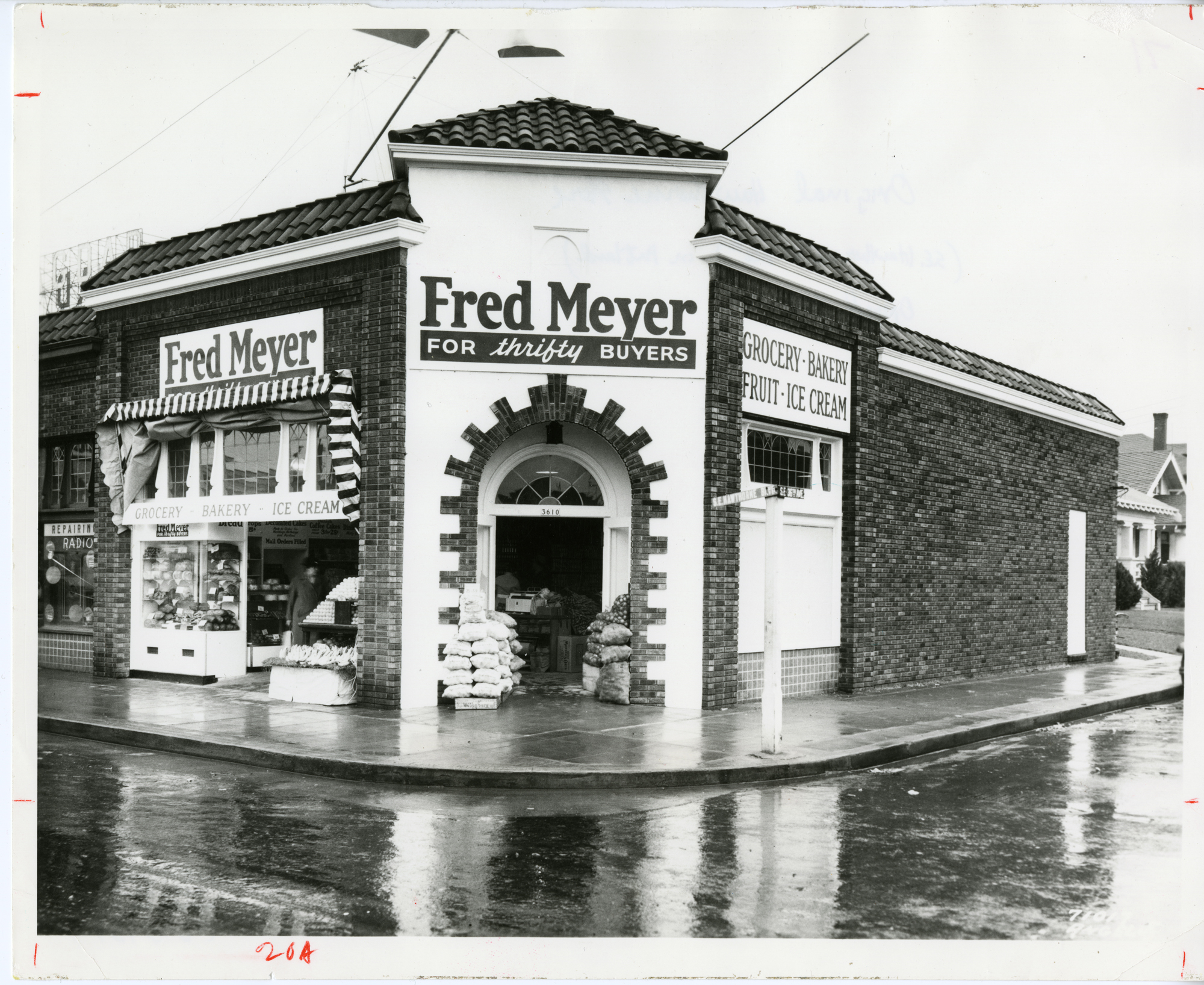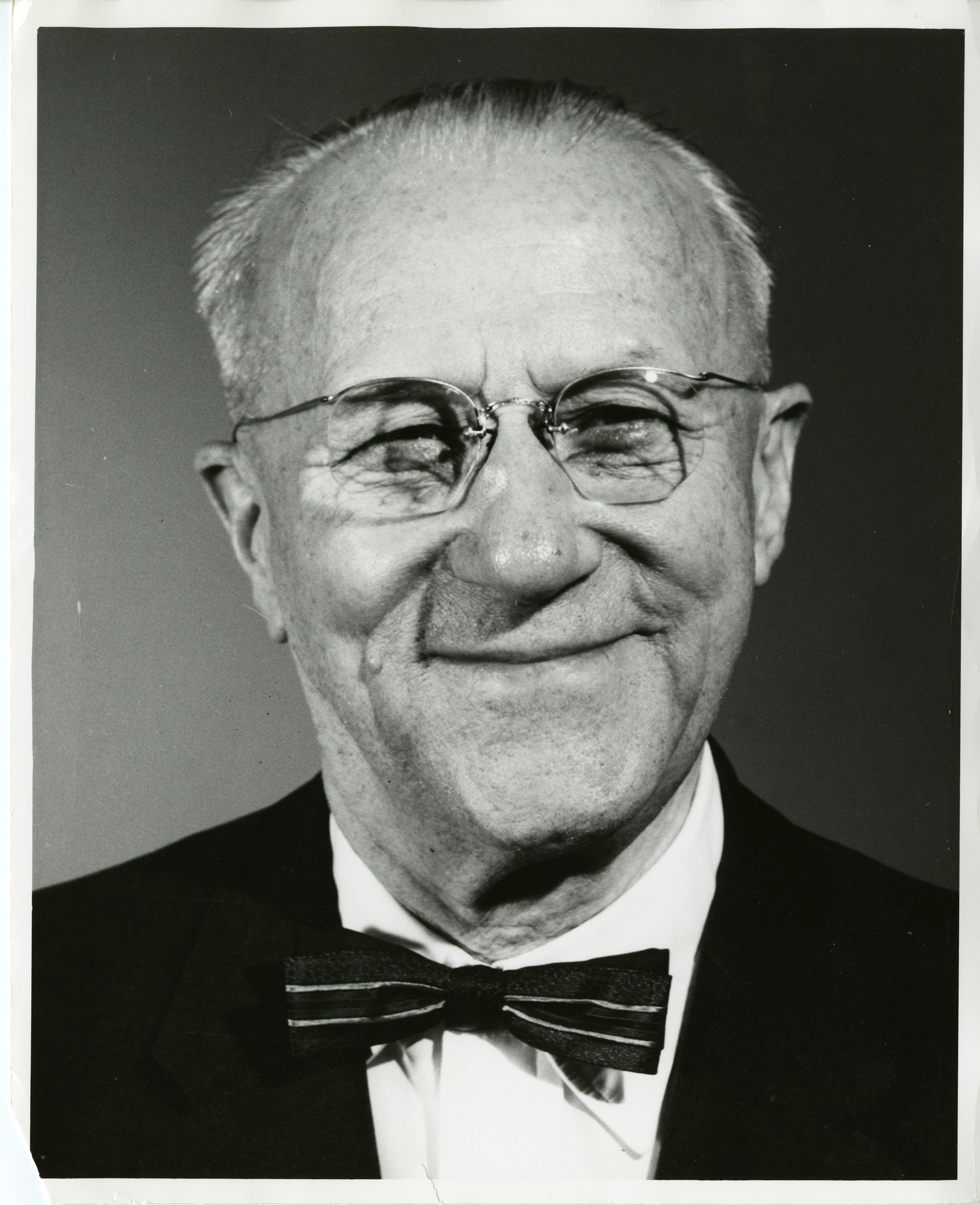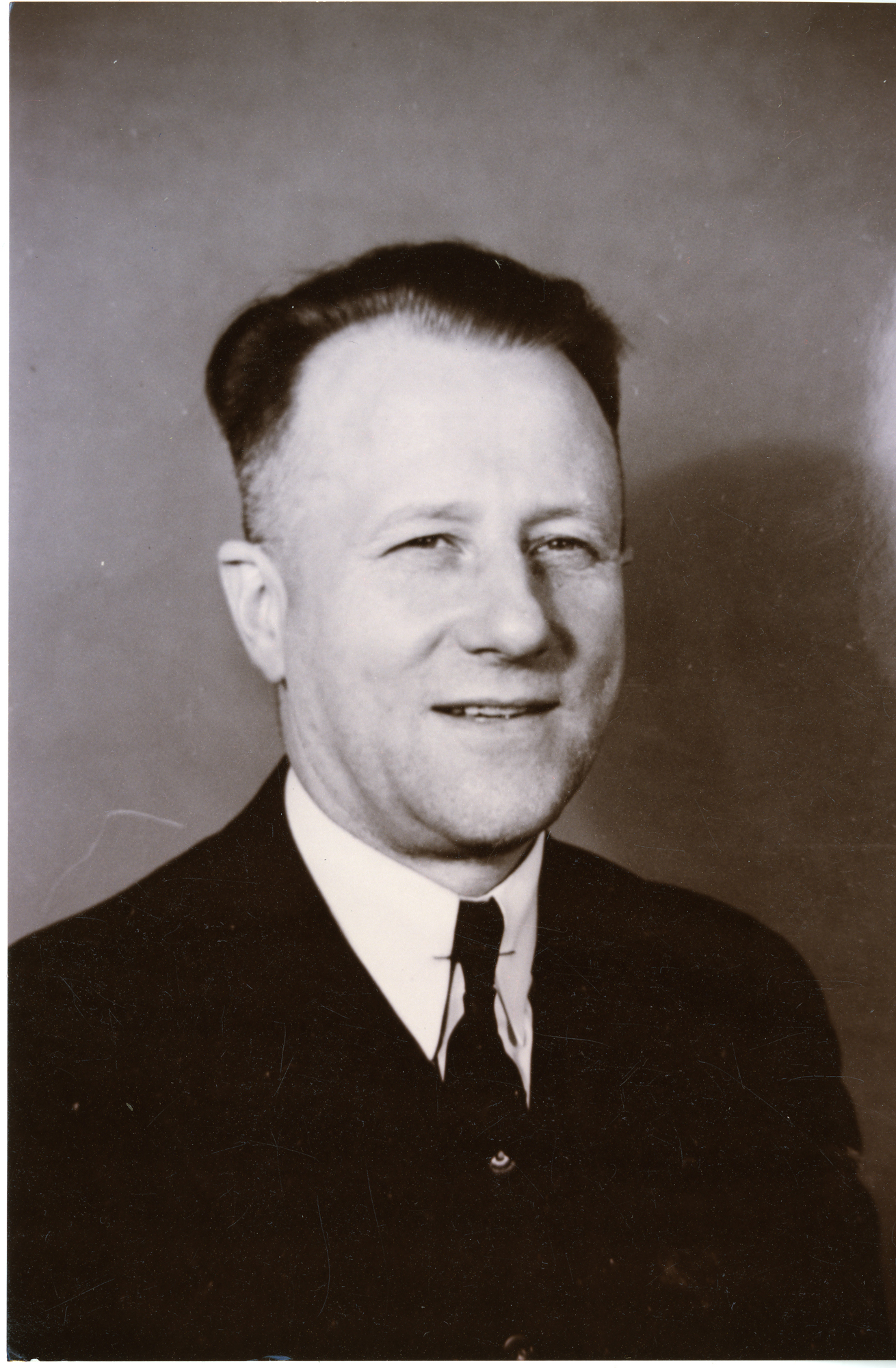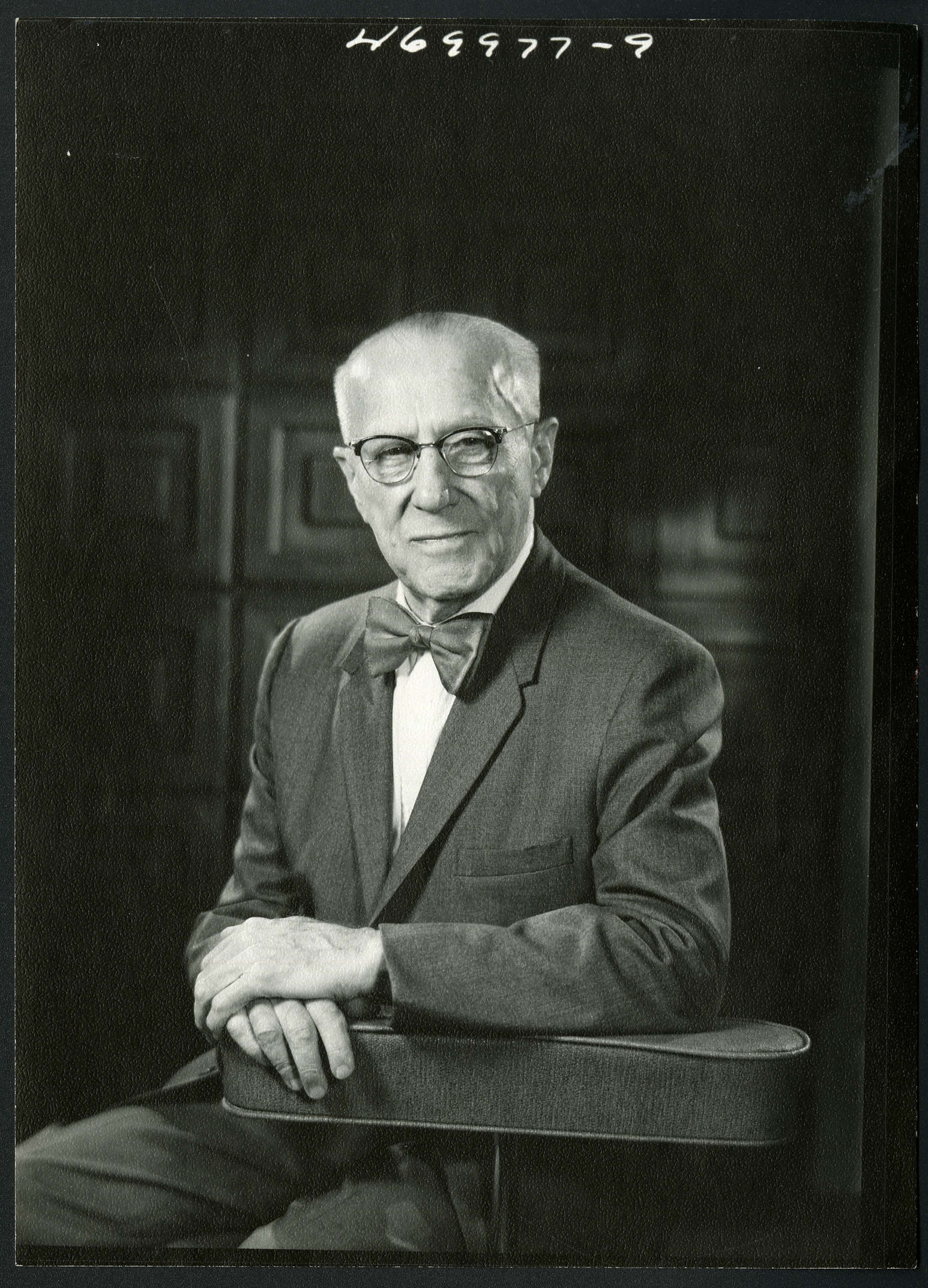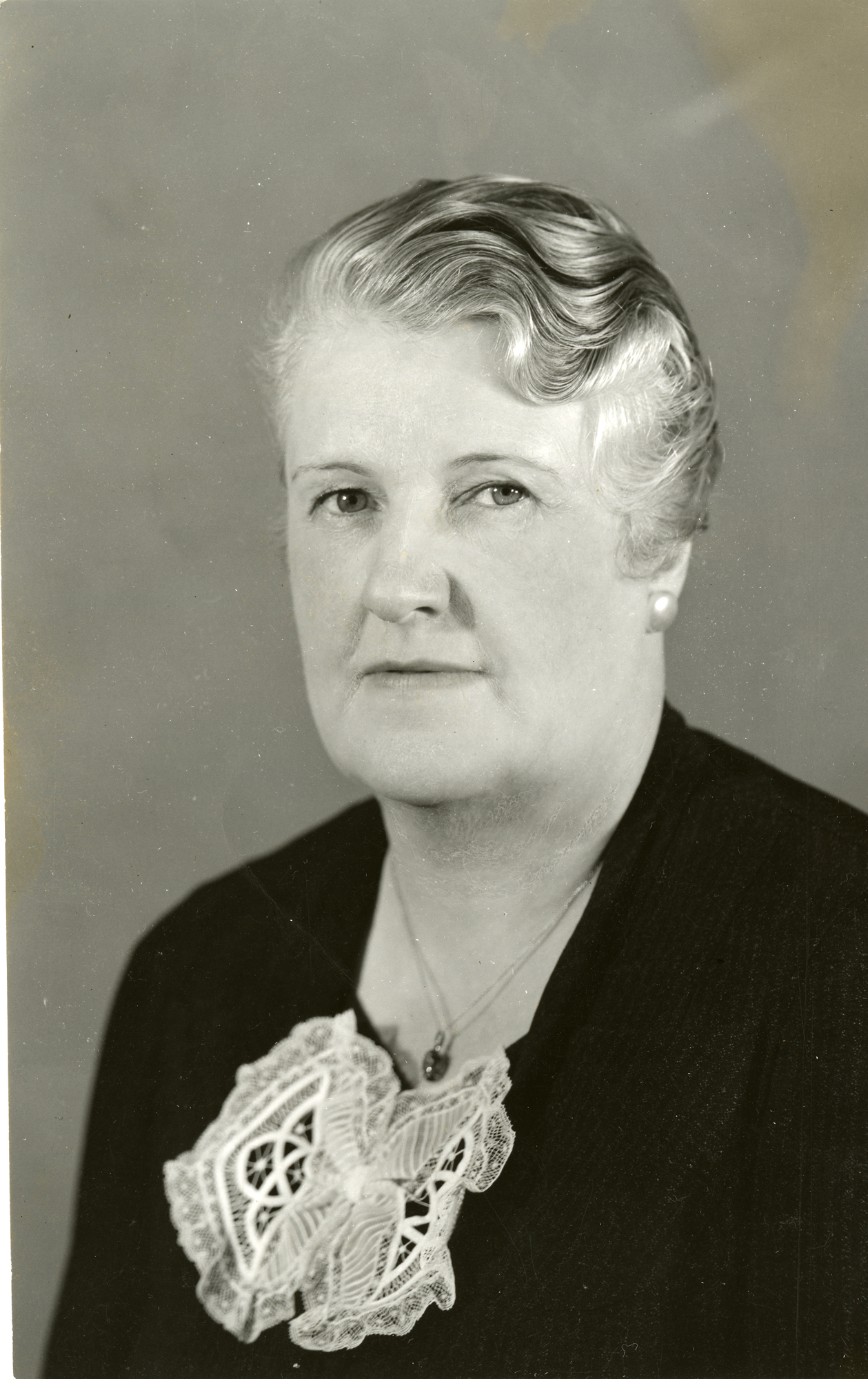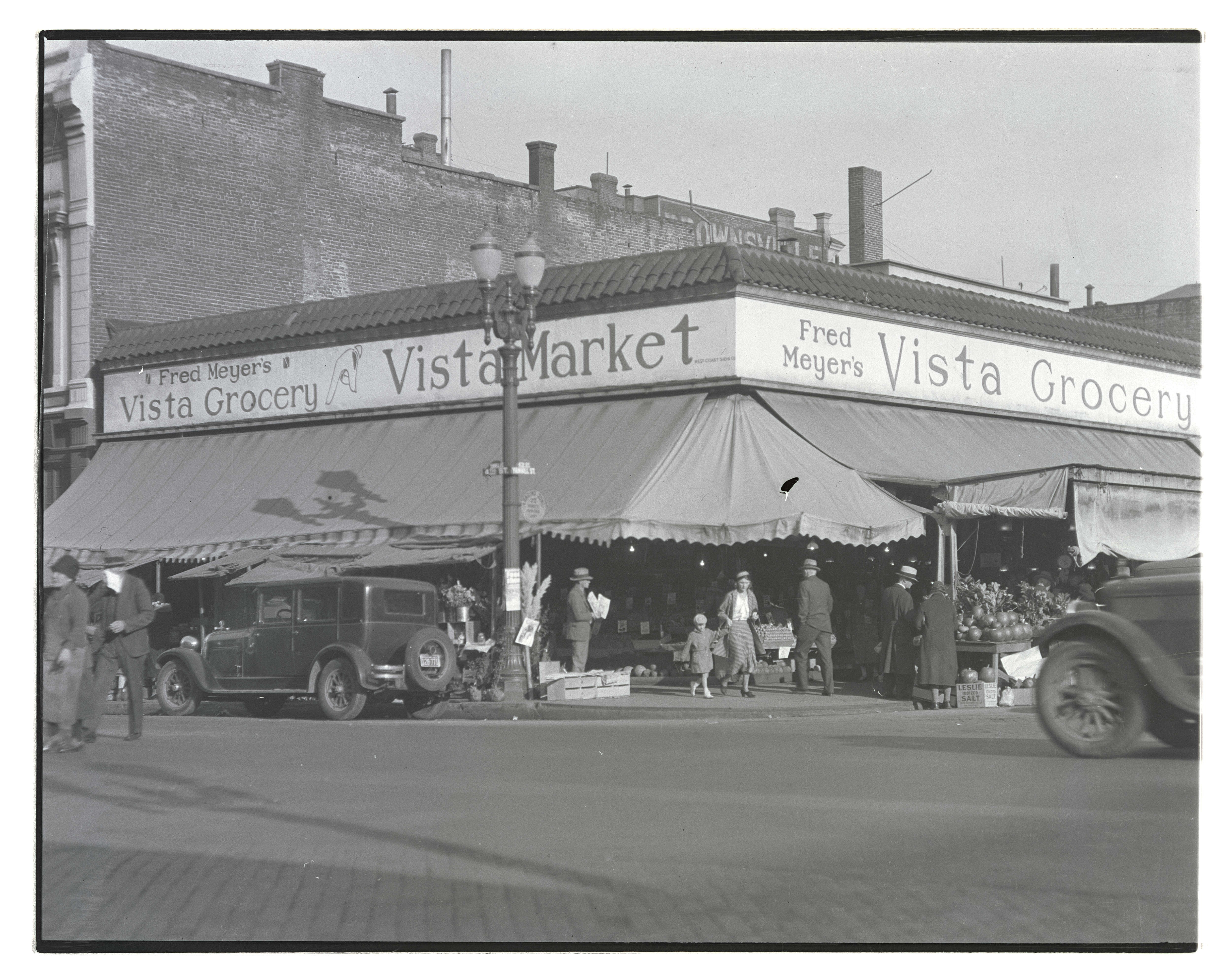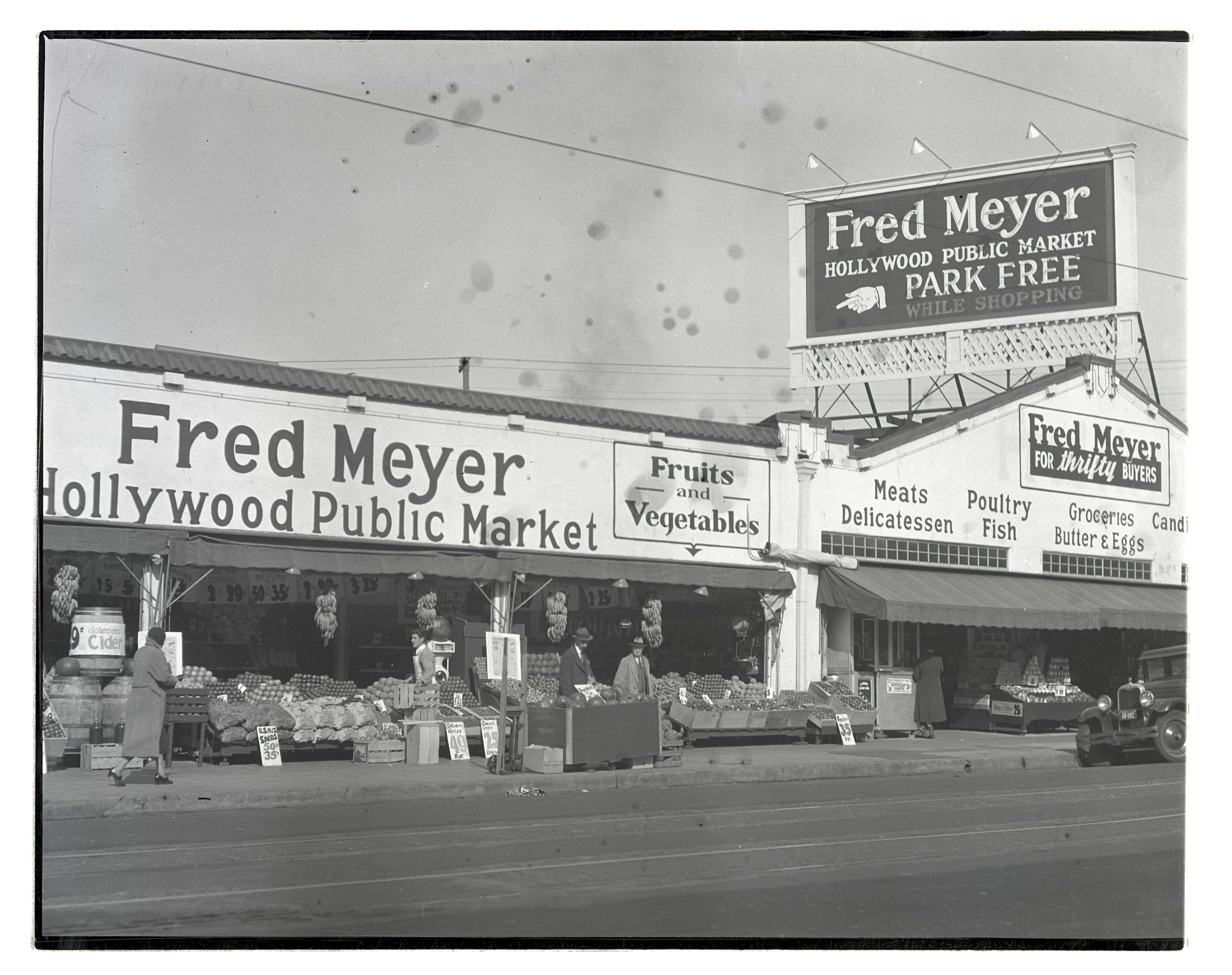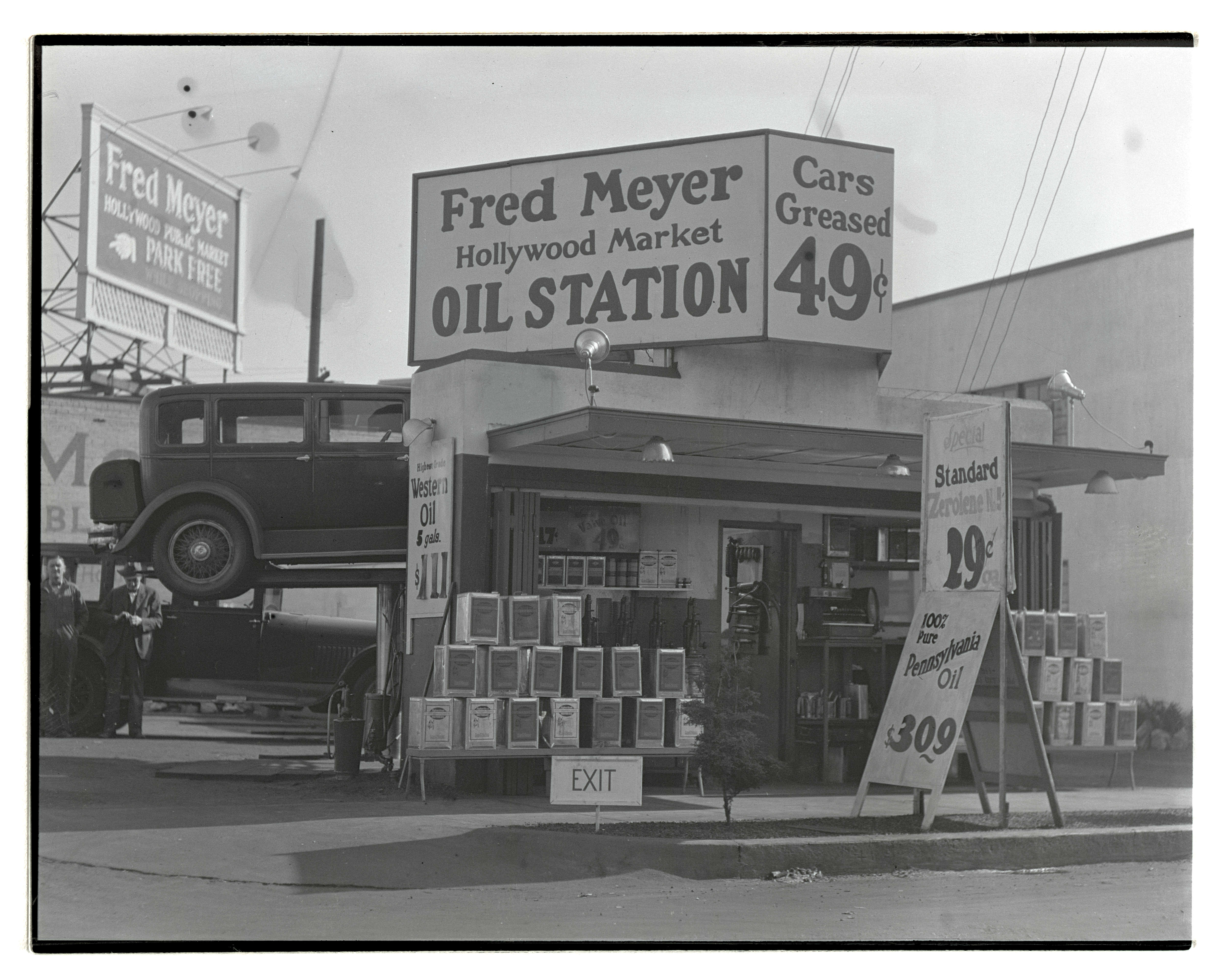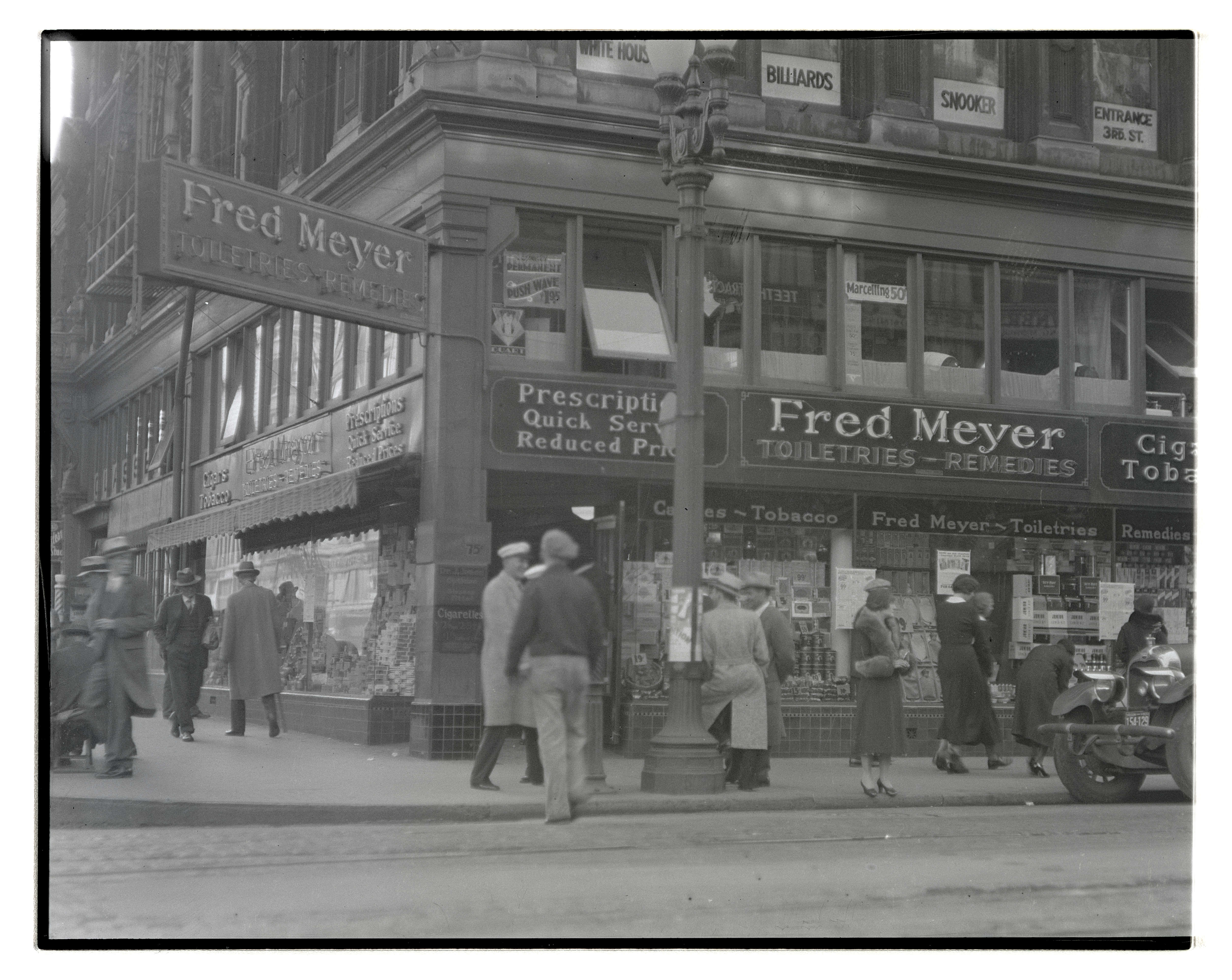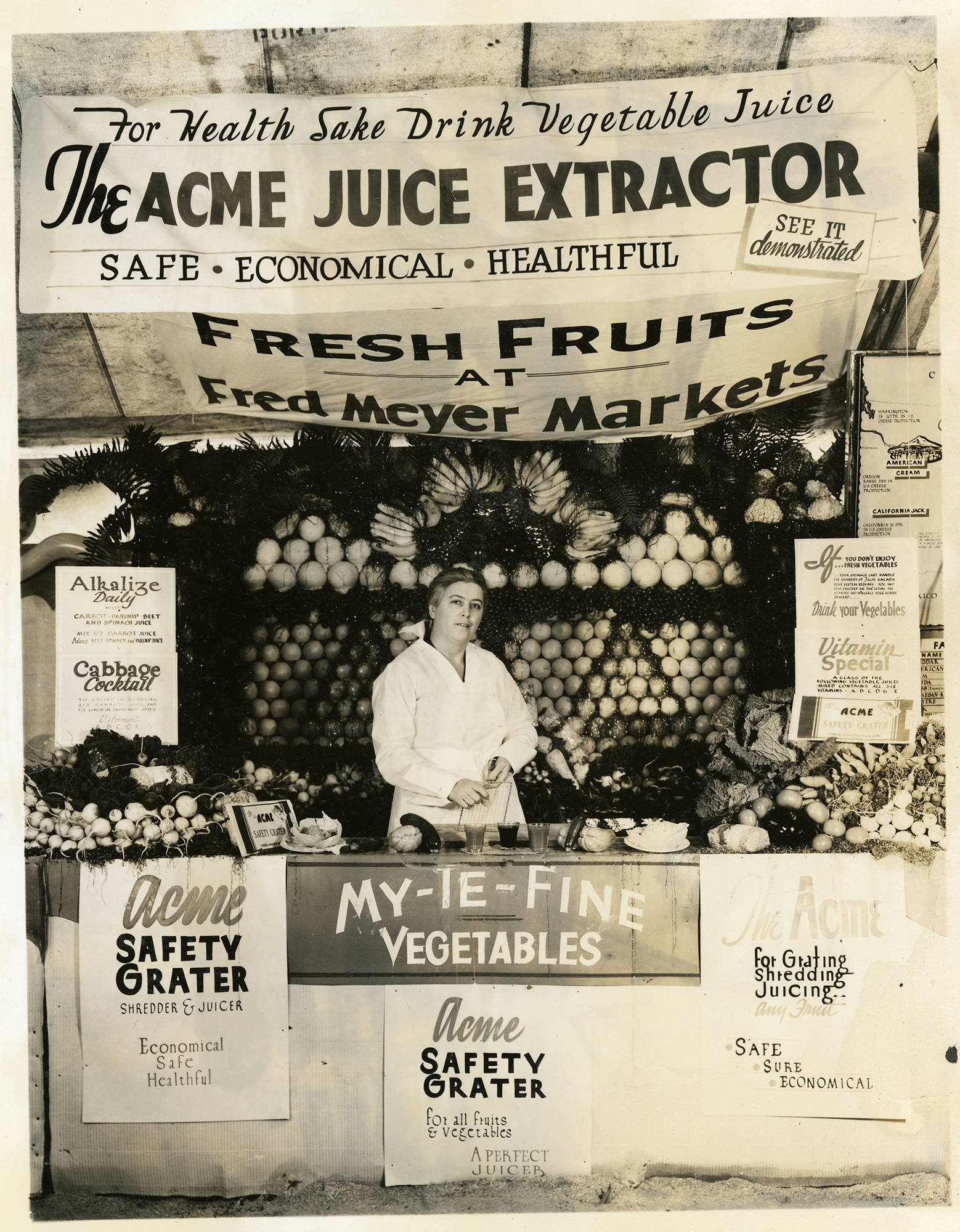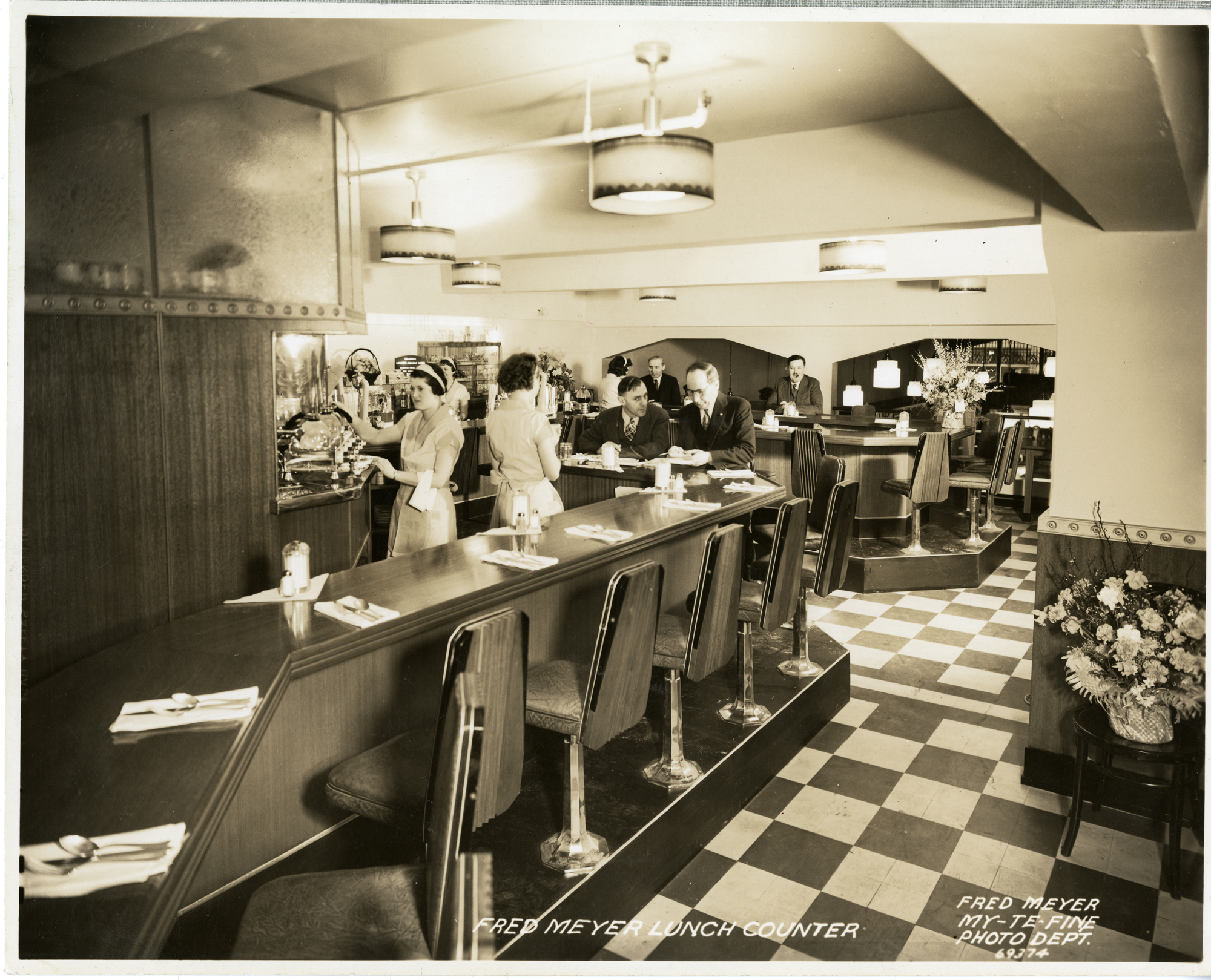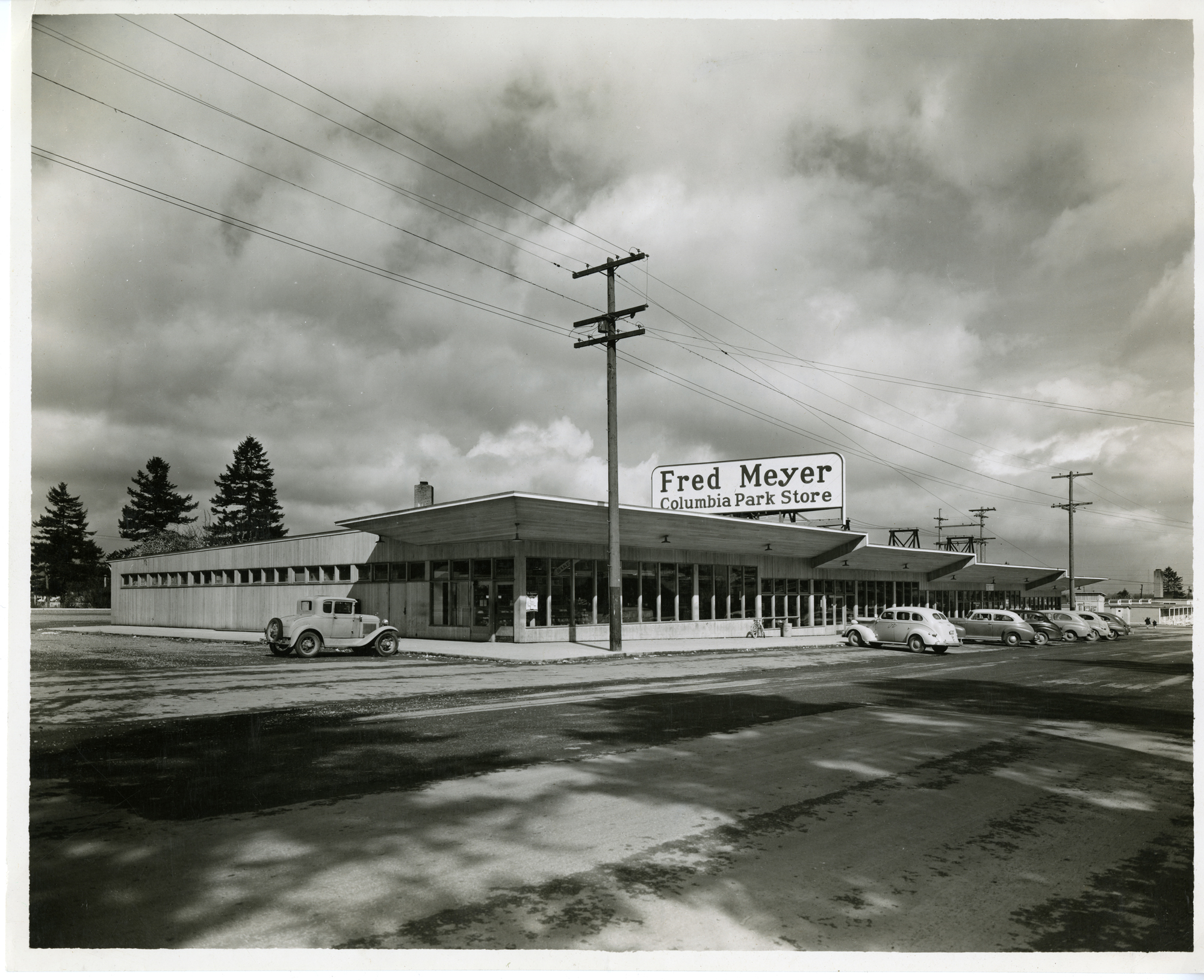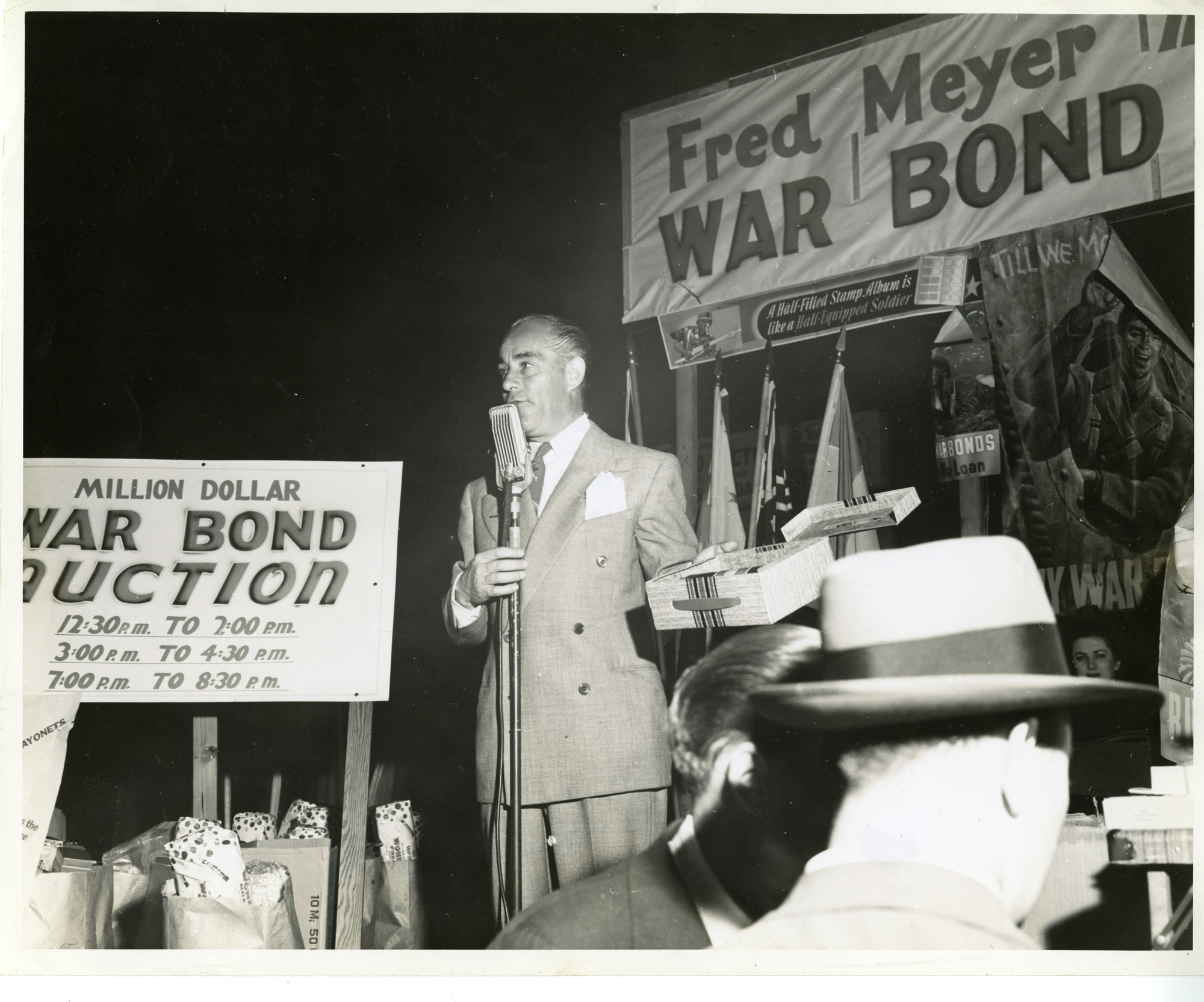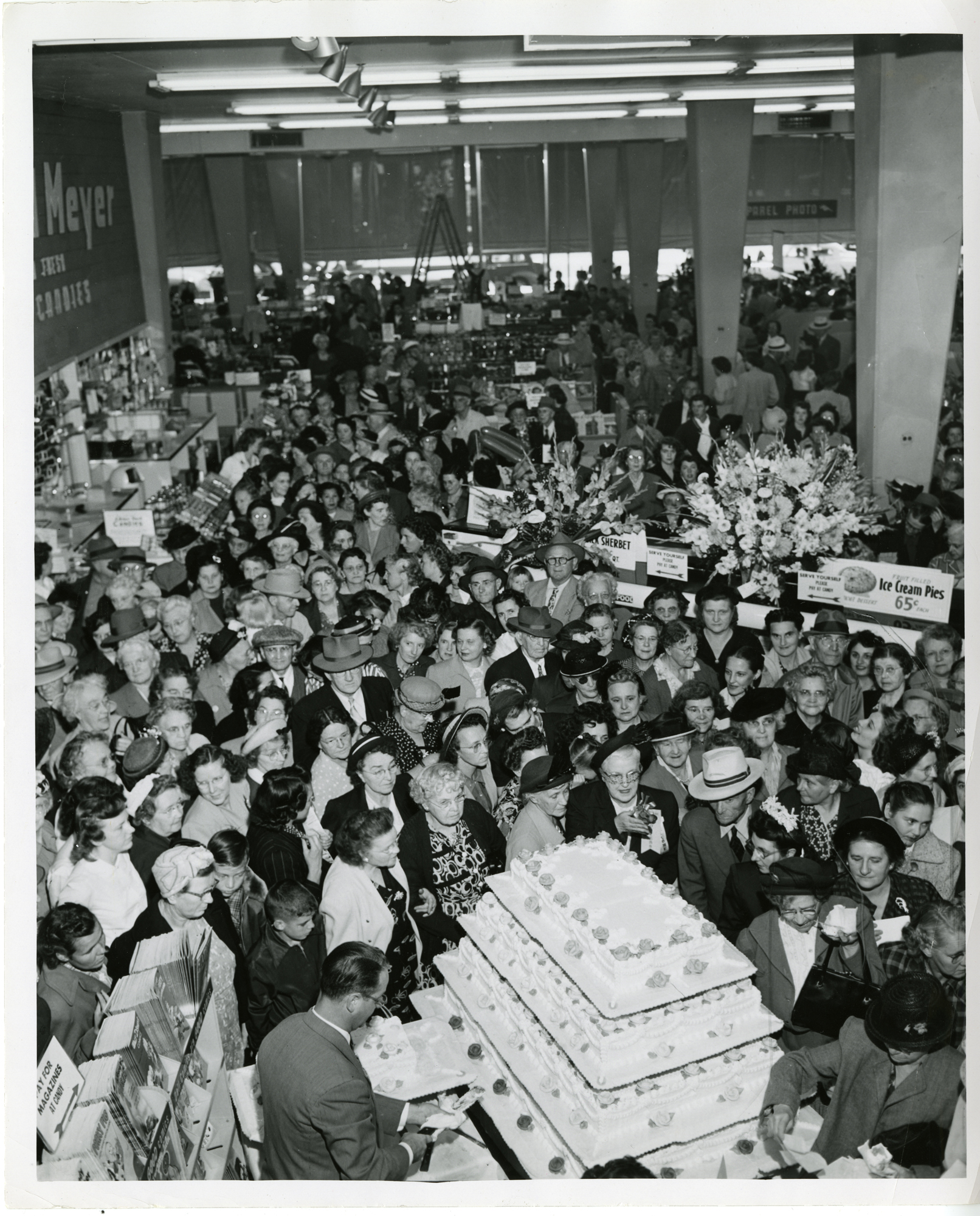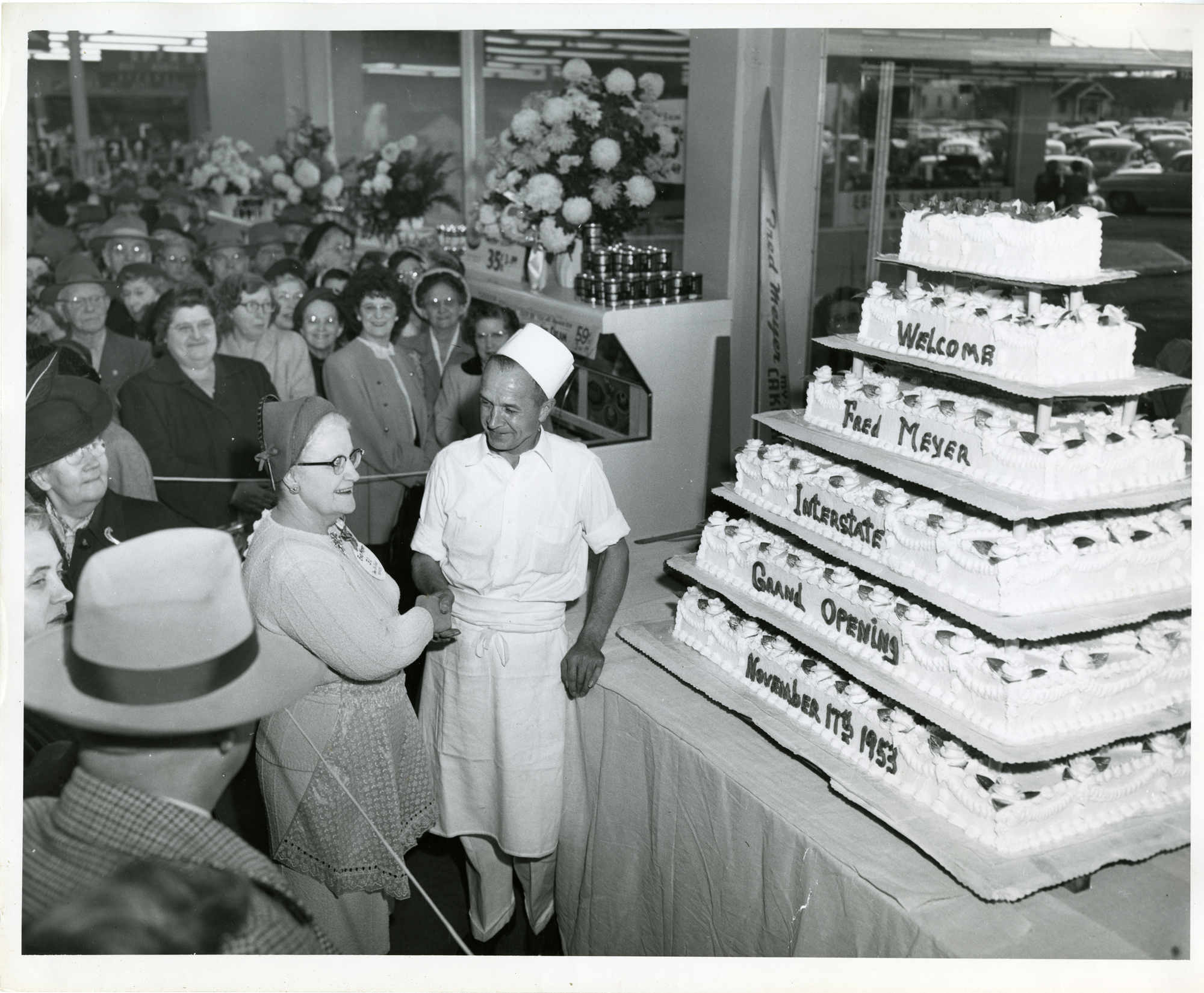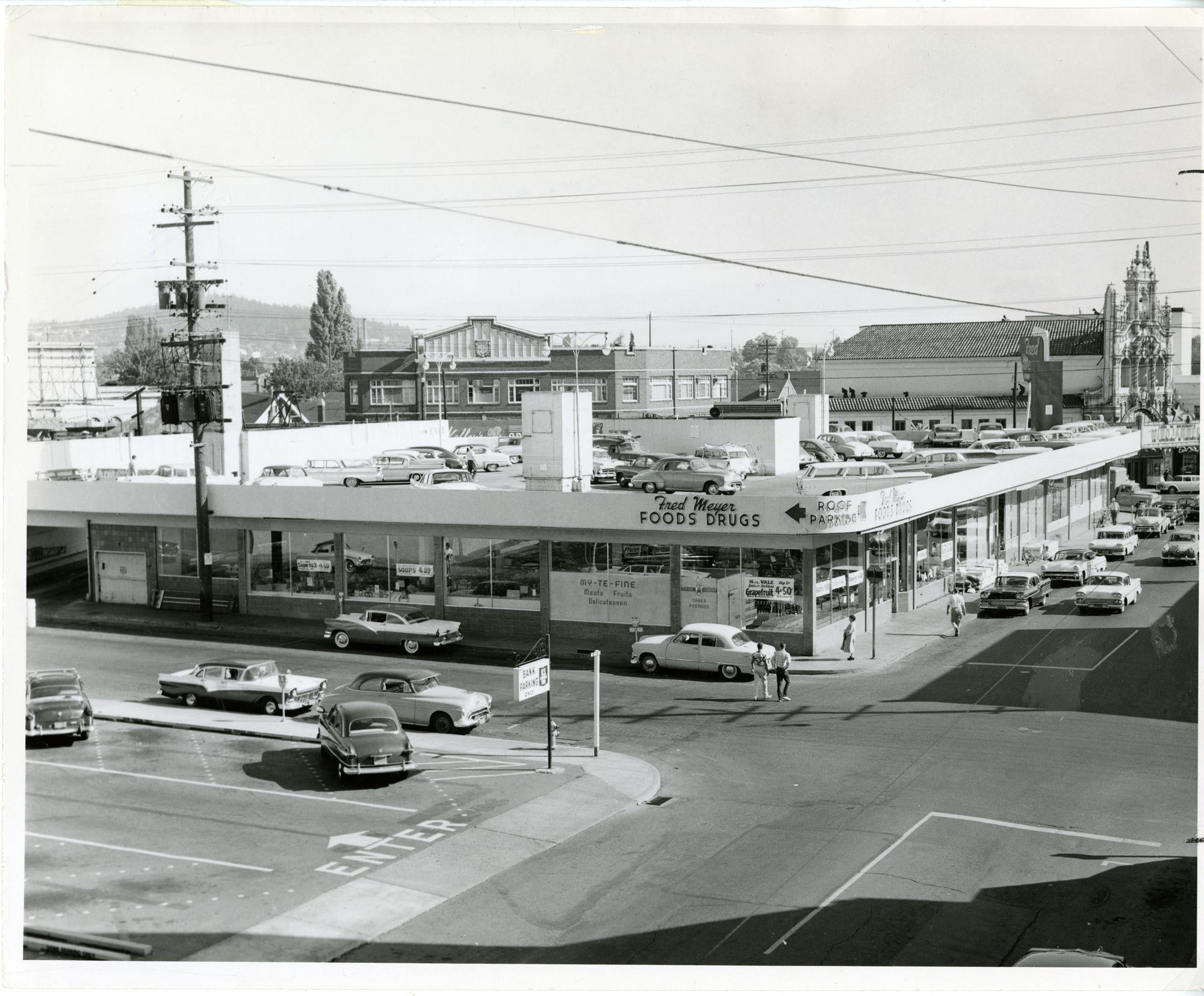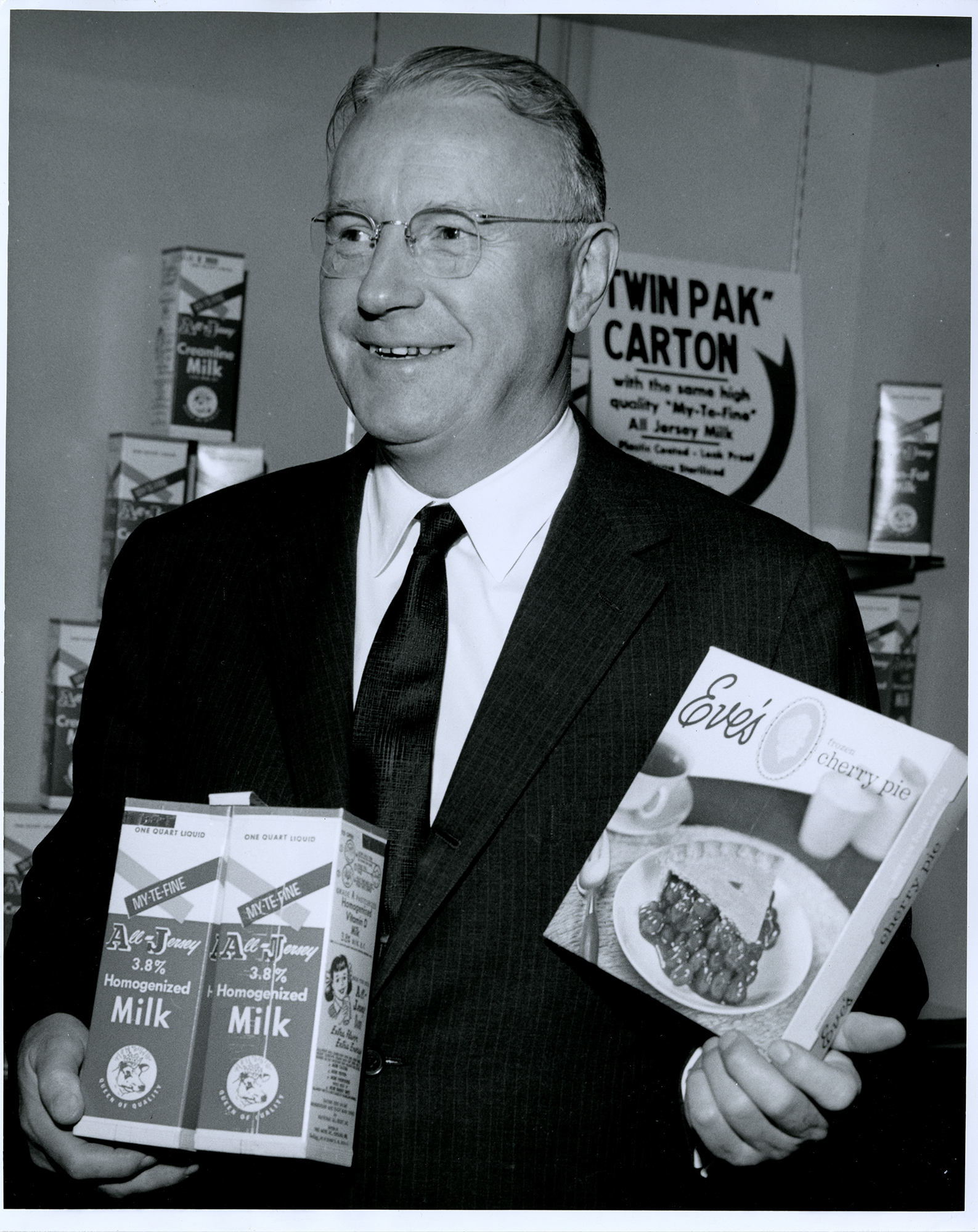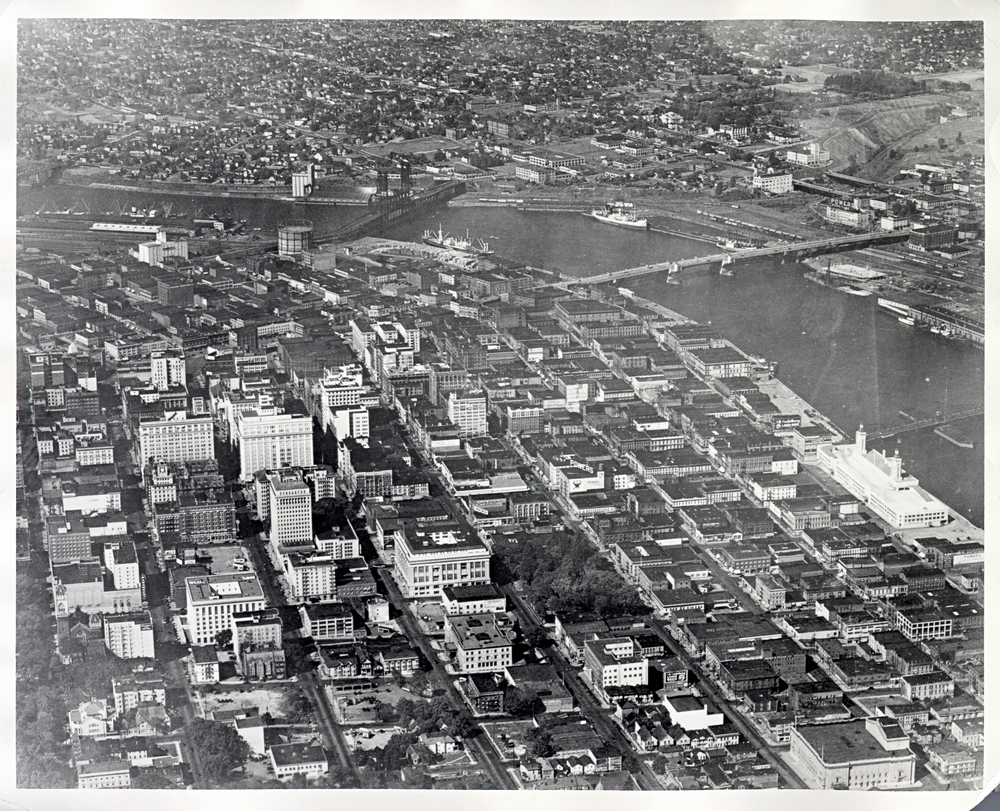During a Portland business career that spanned nearly seventy years, Fred Meyer used self-taught entrepreneurial skills to rise from selling coffee door-to-door in 1909 to being a national leader of a self-service, one-stop-shopping retail empire. At his death in 1978, the ninety-two-year-old Meyer controlled sixty-three stores in five western states and employed more than ten thousand workers. One of Oregon’s premier entrepreneurs, he had a national impact, influencing how Sam Walton created Walmart Super Centers.
Fred Henry Grubmeyer was born in Germany in 1886. When he was two years old, his family immigrated to Brooklyn, where his father, Conrad Grubmeyer, ran a grocery store. When he was almost eighteen years old, Fred set out on his own. He tried mining gold in Alaska in 1905, but went broke and moved to Seattle. Living at the YMCA, he met Max Heindel, the guiding force behind the Rosicrucian Fellowship, a religious philosophy and membership that Meyer quietly supported the rest of his life. For Meyer, its key principles included clean living, a relentless search for facts, belief in reincarnation, and a desire to help others.
Meyer bought a small coffee business, sight unseen, in Portland in 1909 near Union Station. When he realized it was a bad location, he launched a door-to-door coffee and tea operation and managed sidewalk stands on Southwest Yamhill Street between First and Fifth Avenues, the location of the Portland Public Market. Meyer leased space in buildings fronting Yamhill and subleased kiosk space to merchants. He also used a small truck to sell grocery staples to logging camps in the Portland area.
By 1919, Grubmeyer saw his future in commercial real estate, and he shortened his name to Fred G. Meyer, possibly because of anti-German sentiments after World War I. He married Eva (or Eve) Chatfield Chiles—who had a young teenage son, Earle A. Chiles—and moved his new family to Seattle, where he believed opportunities were better. Alas, Eva preferred Portland, to which the family soon returned. Earle Chiles spent his entire career working for Fred Meyer, serving as president of Fred Meyer Inc. from 1955 to 1968. Fred Meyer remained the dominant company executive throughout Chiles’s tenure.
In 1922, Fred, a younger brother Henry, and a third businessman opened a Piggly Wiggly store, a chain that offered self-service groceries, on Southwest Yamhill. Meyer had a falling out with his partners, however, and by 1927 he had established Fred Meyer Inc. and adopted the self-service system of shopping. As the years went on, he added many departments to his stores, including clothing, pharmaceutical drugs, hardware, and toys, making him a pioneer in developing the one-stop shopping concept.
Meyer continued his interest in commercial real estate during the late 1920s and built the Alderway Building in downtown Portland, at 539 Southwest Broadway, shortly before the Great Depression hit. Unable to find tenants for the new building, Meyer accepted the loss and concentrated on retail. He converted several buildings from failed businesses to Fred Meyer stores and was one of the few Portland firms to add employees during the prolonged economic slump. During the 1930s, he used a contest among employees to arrive at the My-Te-Fine label that was applied to dozens of house-brand items and were sold at prices lower than national brands. The company dropped the label in the 1980s.
After World War II, Meyer built stores the way he wanted to. New stores in Portland’s Hollywood and Rose City districts and on Hawthorne Boulevard featured rooftop parking. Later, a construction engineer showed Meyer techniques for constructing buildings faster and cheaper, but with no rooftop parking, which he used for the rest of his life.
Though well known locally because of the company’s advertisements and store openings, Meyer was an intensely private man whose business dominated his life. Even among his closest associates, he seldom spoke about his family or early life. Though he chatted amiably with customers during store openings, his demeanor in the office was forceful, aggressive, and often abrasive. Regardless, many top corporate officials remained with the company for decades.
Eva Meyer, who worked side-by-side with her husband for forty years, died in 1960, soon after the opening of the sixteenth Fred Meyer store. Well-liked by employees, she provided balance to her husband’s tough managerial style. In addition to being treasurer, she was involved in all aspects of the company, and after her death Meyer opened forty-two Eve’s Buffets or Eve’s Restaurants inside Fred Meyer stores in her honor. Those restaurants closed after Fred Meyer died.
After Eva’s death, Meyer expanded his empire at a faster rate. He sold public stock for the first time in 1960, opened new stores, bought existing stores, and remodeled older ones in Oregon, Washington, Montana, Idaho, and Alaska. In the Portland region, he bought land in suburban Beaverton, Gresham, Oak Grove, and other locations, which remained unused until roads and populations increased enough to support a store. During the early 1970s, Meyer was visited by Sam Walton, who was building a one-stop-shopping empire. Meyer’s officials later helped Walton add food to his stores.
The Meyers had no children together, and Meyer had not been a generous donor during his lifetime, but his will called for the bulk of his estate, valued at $120 million, to create a charitable trust, which over time totaled millions of dollars each year to charitable organizations. He had hoped that his management team could continue operating the chain after his death, but conflicts of interest were inevitable because many of those managers were directors of the Meyer Trust. Maximizing trust assets mandated the sale of the company, which was sold in 1981 to Kravis Kohlberg and Roberts, a leveraged buyout firm, and to Cincinnati-based Kroger Inc. in 1998.
-
![]()
Fred Meyer, SE 36th and Hawthorne (now Bread and Ink Cafe).
Courtesy Oregon Hist. Society Research Lib., ba026035
-
![]()
Fred G. Meyer, c,1976..
Courtesy Oregon Hist. Society Research Lib., ba026204
-
![]()
Fred G. Meyer, c.1935.
Courtesy Oregon Hist. Society Research Lib., ba026200
-
![]()
Fred G. Meyer, c.1970.
Courtesy Oregon Hist. Society Research Lib., SR9474_image
-
![]()
Eva C. Meyer, c.1935.
Courtesy Oregon Hist. Society Research Lib., ba026113
-
![]()
Vista Fred Meyer, SW 4th and Yamhill, c.1930..
Courtesy Oregon Hist. Society Research Lib., Oregon Journal, 371N5482
-
![]()
Fred Meyer store in Hollywood neighborhood, Portland, c.1932..
Courtesy Oregon Hist. Society Research Lib., Oregon Journal, 371N5601
-
![]()
A Fred Meyer oil station, Hollywood neighborhood, c.1932..
Courtesy Oregon Hist. Society Research Lib., Oregon Journal, 371N5600
-
![]()
Fred Meyer's self-service drugstore, Third and Morrison in Portland, c.1933.
Courtesy Oregon Hist. Society Research Lib., Oregon Journal, 371N5407
-
![]()
A Fred Meyer booth promoting juice and juicers, 1936.
Courtesy Oregon Hist. Society Research Lib., ba026156
-
![]()
One of the lunch counters in a Portland Fred Meyer, c.1937.
Courtesy Oregon Hist. Society Research Lib., ba026043
-
![]()
Fred Meyer in University Homes, North Portland, opened for workers in wartime industries, 1943.
Courtesy Oregon Hist. Society Research Lib., ba026029
-
![]()
Fred Meyer sponsors a War Bond auction during WWII..
Courtesy Oregon Hist. Society Research Lib., ba026212
-
![]()
Grand opening of the SE Hawthorne Fred Meyer store on 39th (Cesar E. Chavez), 1951..
Courtesy Oregon Hist. Society Research Lib., ba026034
-
![]()
Eva Meyer helps cut the cake at the grand opening of the N. Interstate store, 1953..
Courtesy Oregon Hist. Society Research Lib., ba026045
-
![]()
Rooftop parking at the Fred Meyer store in the Hollywood neighborhood, Portland, c.1955..
Courtesy Oregon Hist. Society Research Lib., ba026021
-
![]()
Earle A. Chiles, c.1962.
Courtesy Oregon Hist. Society Research Lib., ba026117
Related Entries
Map This on the Oregon History WayFinder
The Oregon History Wayfinder is an interactive map that identifies significant places, people, and events in Oregon history.
Further Reading
"The Fred Meyer Story" (online exhibit), with video.
Fred G. Meyer v. Henry Meyer, et al., Oregon Supreme Court, file no. 6174, 1928.
"New Market Promised: Fred G. Meyer to built on Sandy Boulevard." Oregonian, May 3, 1931.
"The 'Mother of Fred Meyer, Inc.'" Oregonian, January 30, 1960.
"Will Forms Foundation." Oregonian, February 3, 1960.
Brennan, Tom. "Fred Meyer saga rates 'most dramtic' in 1980." Oregonian, January 4, 1981.
Oregonian, Sept. 3, 1978, p. 1
Canedy, Dana. "Kroger to Buy Fred Meyer, Creating Country's Biggest Grocer." New York Times, October 20, 1998.
Vance, Sandra Stringer, and Roy V. Scott. Wal-Mart: A History of Sam Walton’s Retail Phenomenon. Woodbridge, CT: Twayne Publishers, 1994.

